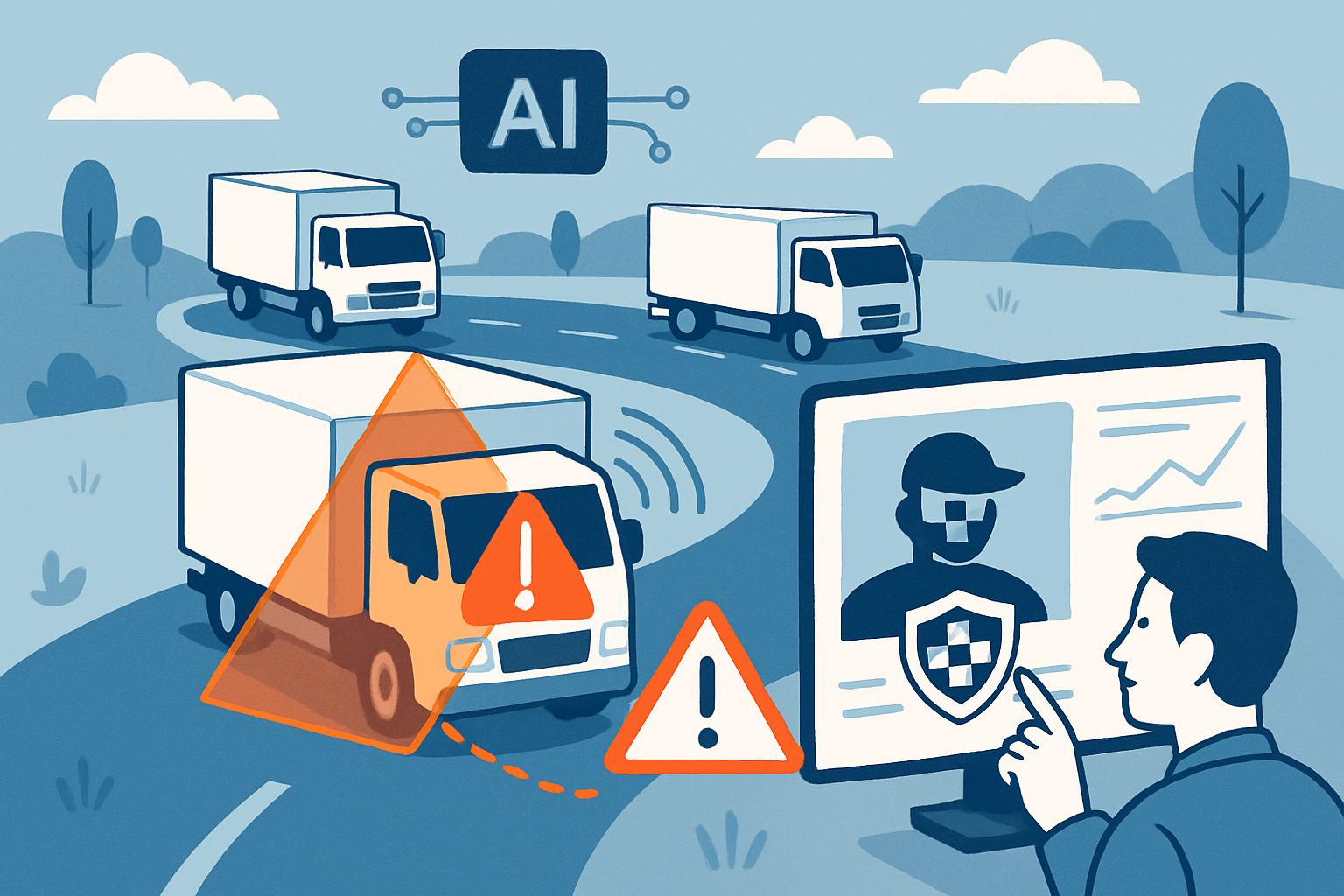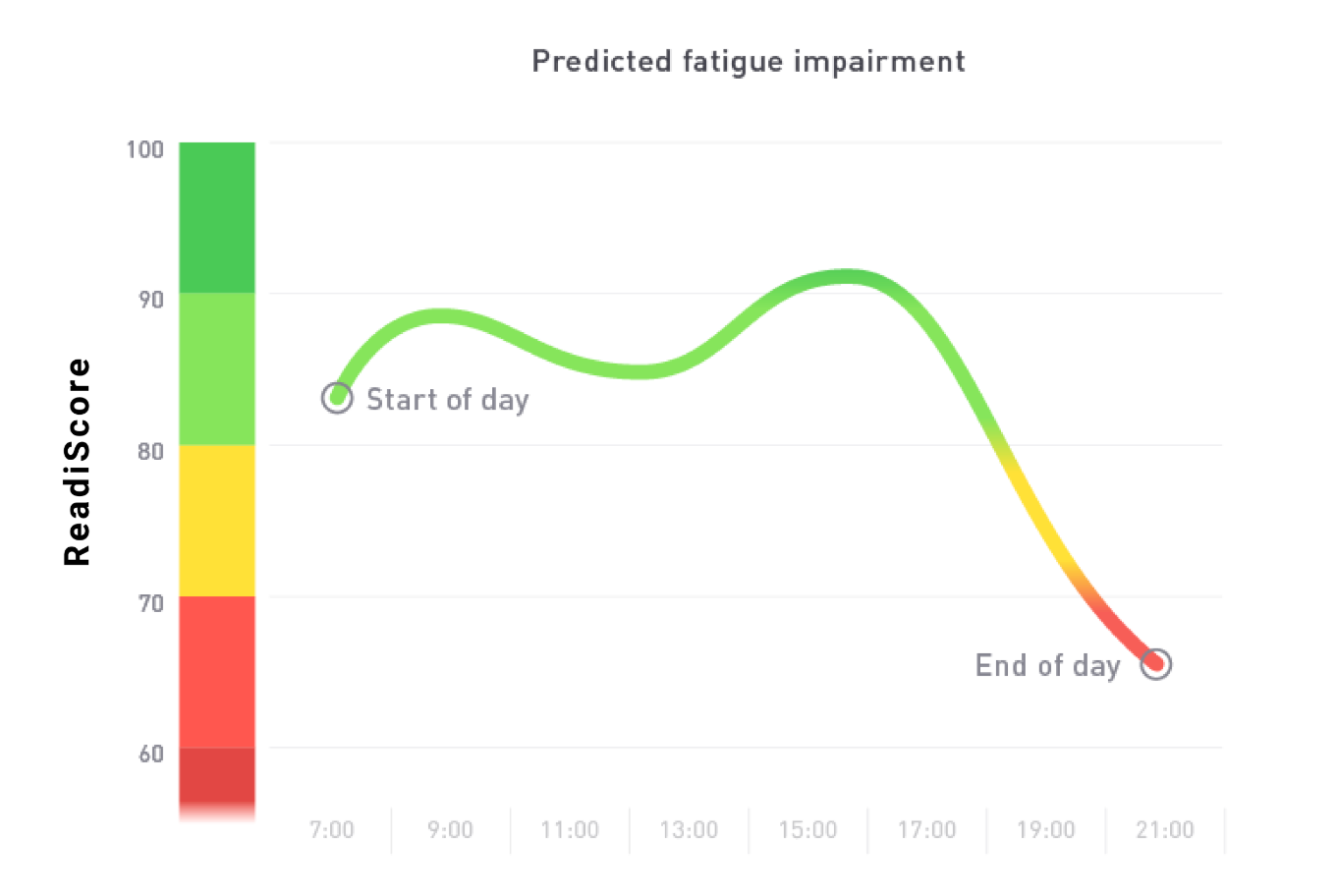
Across heavy industry, awareness of fatigue risk is growing. In industries such as mining, oil & gas, and construction, worker fatigue regularly causes safety incidents. However, even when fatigue-related incidents don’t occur, fatigue poses significant challenges to worker productivity and unscheduled downtime.
In this article, you’ll learn how worker productivity can be increased by managing fatigue with a predictive fatigue management platform.
How is worker productivity affected by fatigue?
There are three fundamental ways that worker productivity is affected by fatigue:
- unscheduled equipment downtime caused by incidents or accidents
- absenteeism (“downtime for humans”)
- lower per-hour productivity (less efficient operations during uptime)
Let’s explore fatigue’s impact on each of these three areas in greater detail.
1. Fatigue & Unscheduled Downtime
Unscheduled downtime can occur when fatigue limits the use of a specific machine, or, in catastrophic cases, for an entire operation:
Quantifying the impact of these involves understanding the output attributable to:
- the offline piece of equipment, per hour offline
- the whole mine site or operation, per hour, in the event of a shutdown
Causes of this downtime can be excessive wear and tear, caused by a fatigued operator using equipment more harshly. In one study by Fatigue Science, drivers of vehicles were found to be 4 times more likely to speed and 8 times more likely to break harshly when fatigued, as determined by the user’s ReadiScore.
Fatigue-related incidents and accidents can also cause unscheduled downtime directly. In a study by the US Department of Transportation using the ReadiScore, rail operators were found to be 5 times more likely to get in an accident, and accidents found to be 3 times more costly when operating with a ReadiScore below 70 versus above 90. In another study, Fatigue Science found that mining haul truck operators with a ReadiScore below 70 were 14 times more likely to incur a “microsleep” than non-fatigued workers, as recorded by an in-cab camera system.
Finally, the third study by Caterpillar Global Mining found that roughly 65% of haul truck driving accidents in open-pit mines are fatigue-related.
2. Fatigue & Absenteeism
Worker fatigue is also a major cause of absenteeism, or the occurrence of workers unexpectedly not being able to show up for work on a scheduled shift. This sort of “downtime for humans” can occur due to either acute fatigue, i.e. a worker being too tired to show up for a shift, or due to chronic fatigue, wherein a worker suffers the well-documented, long-term health impacts of a lack of sleep over weeks, months, or years.
Absenteeism impacts organizational productivity directly: When a crew member can’t show up for duty, the organization faces the cost of finding other workers to fill the role temporarily. The excess staffing requirements to prepare for this have a direct impact on a corporation’s bottom line. Moreover, the complexity of having a substitute worker arrive can create issues of disrupted workflows and unfamiliar operations.
Finally, in the event, a shift cannot be filled, both the productivity of that worker and the equipment they would have been using are lost.
Quantifying the cost of absenteeism to your operation is thus another critical component to understanding the full range of impacts or worker fatigue.
3. Fatigue & Per-Hour Productivity
Finally, worker fatigue directly impacts operational productivity even when everything runs “smoothly” by most visible measures.
New research indicates that per-hour productivity is lower for several types of workers, particularly in mining environments when a worker is fatigued.
In a study with a major gold mine in Mexico, Fatigue Science obtained telematics data on shovel operators and haul truck operators through the course of a 3-month period. Each operator was also equipped with a wearable device on the Readi fatigue management platform. Consequently, each user’s ReadiScore (indicating fatigue level) could be correlated with various productivity and safety metrics.
The results were striking. Shovel operators were found to be 3.2% slower in terms of ‘dig rate’ than their own personal performance when observed at a ReadiScore below 70 (high fatigue) versus one above 90 (low fatigue). Similarly, haul truck operators were found to be 3.3% slower in terms of ‘spot time’ (the time it takes to position a truck to receive a load) when fatigued versus alert. (In a low margin industrial business, a ~3% loss in output due to fatigue can represent a very significant hit as a percentage of profit.)
How does fatigue cause these changes in per-hour productivity?
Fatigue plays a direct and measurable role in the cognitive function and the coordination required for complex tasks, and the ReadiScore is an objective measure of the percent decrease in these abilities. For example, a worker with a ReadiScore of 70 will demonstrate approximately 30% poorer performance in key mental skills like decision-making, communication, memory, and coordination. In other words, fatigued workers are not only more likely to make physical mistakes, but they’re more likely to be less precise in their operation of equipment as well.
Is your operation’s understanding of workforce fatigue subjective?
With fatigue’s impact on productivity being understood by a growing number of leadership teams throughout heavy industry, many leaders are now seeking ways to measure these impacts.
Without objective data on fatigue, it’s hard to invest in programs to improve it for the purpose of driving industrial productivity. Perhaps you’ve implemented a fatigue-reduction initiative or two in the past, and found it challenging to tell if it really made a difference.
A traditional approach to fatigue management may involve pre-shift sleep questionnaires, supervisors encouraging their crew members to speak up when they feel fatigued, and the occasional sleep education seminars. While each of these tactics has its place, they each offer only subjective impressions of worker fatigue, leaving much to chance and uncertainty.
And while reactive technologies like in-cab cameras that analyze a driver’s eye movement in haul trucks may detect the most extreme instances of fatigue moments before a crash, they don’t generate a robust data set that can be used to objectively quantify fatigue levels across all hours worked in each sector of your operation.
To drive productivity by managing fatigue, you need objective data and a clear approach. The first step is to find a way to objectively measure a baseline of fatigue exposure throughout your workforce. Then, choose to implement a program or programs to manage fatigue on a daily basis. Thirdly, continue to measure changes to that fatigue baseline. With those in place, firms can start to realize project measurable impacts of fatigue management in their operations.
Predictive fatigue management technology generates objective data
Unlike legacy approaches to fatigue management, predictive technology can generate a rich data set that quantifies fatigue levels throughout each group, location, and shift pattern in your operation, based on real data from workers throughout your workforce. For this reason, data-minded leaders in operations are increasingly implementing technologies like Readi as a centerpiece of a data-driven fatigue management operation.
Stop the guesswork and start using predictive fatigue management software
With fatigue as the root cause of unscheduled equipment downtime, absenteeism, and lower productivity per hour during uptime, how do you understand fatigue exposure, and then measurably reduce it, to change these metrics?
A system like Readi can help. Working together, members of industrial organizations can meaningfully reduce fatigue risk, which is shown to have a direct correlation to measurable increases in worker productivity and decreases in operational shutdowns.
From data-driven fatigue analytics for leadership teams, personal Fatigue Alerts for operators, or a frictionless fatigue intervention tool for supervisors, all the pieces come together in Readi, our centralized and secure Fatigue Management Information System. To tie it all together, our team of experienced business analysts will work with you to build a business case for organization-wide usage, projecting a Return on Investment for your operation specific to your unique productivity metrics.




